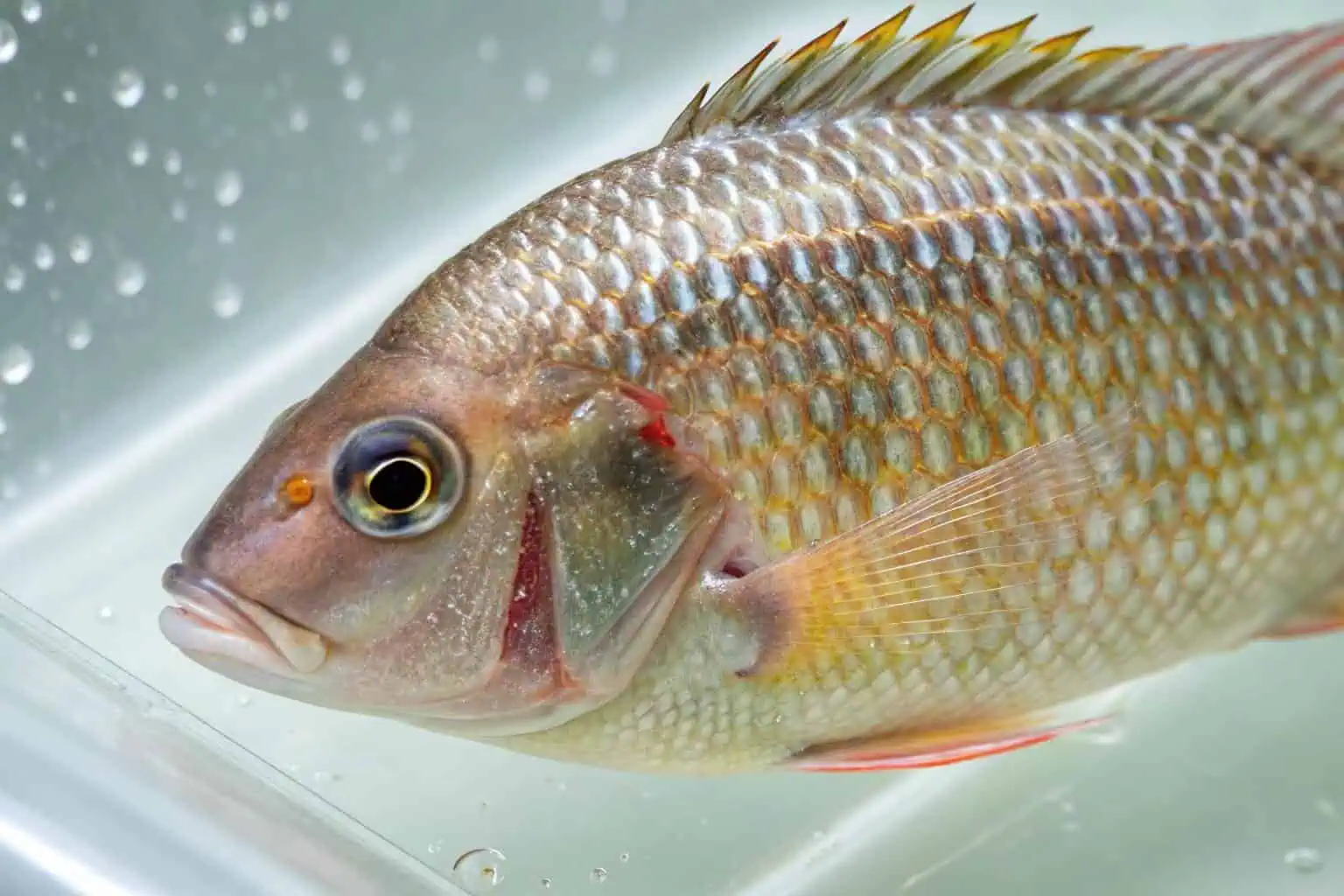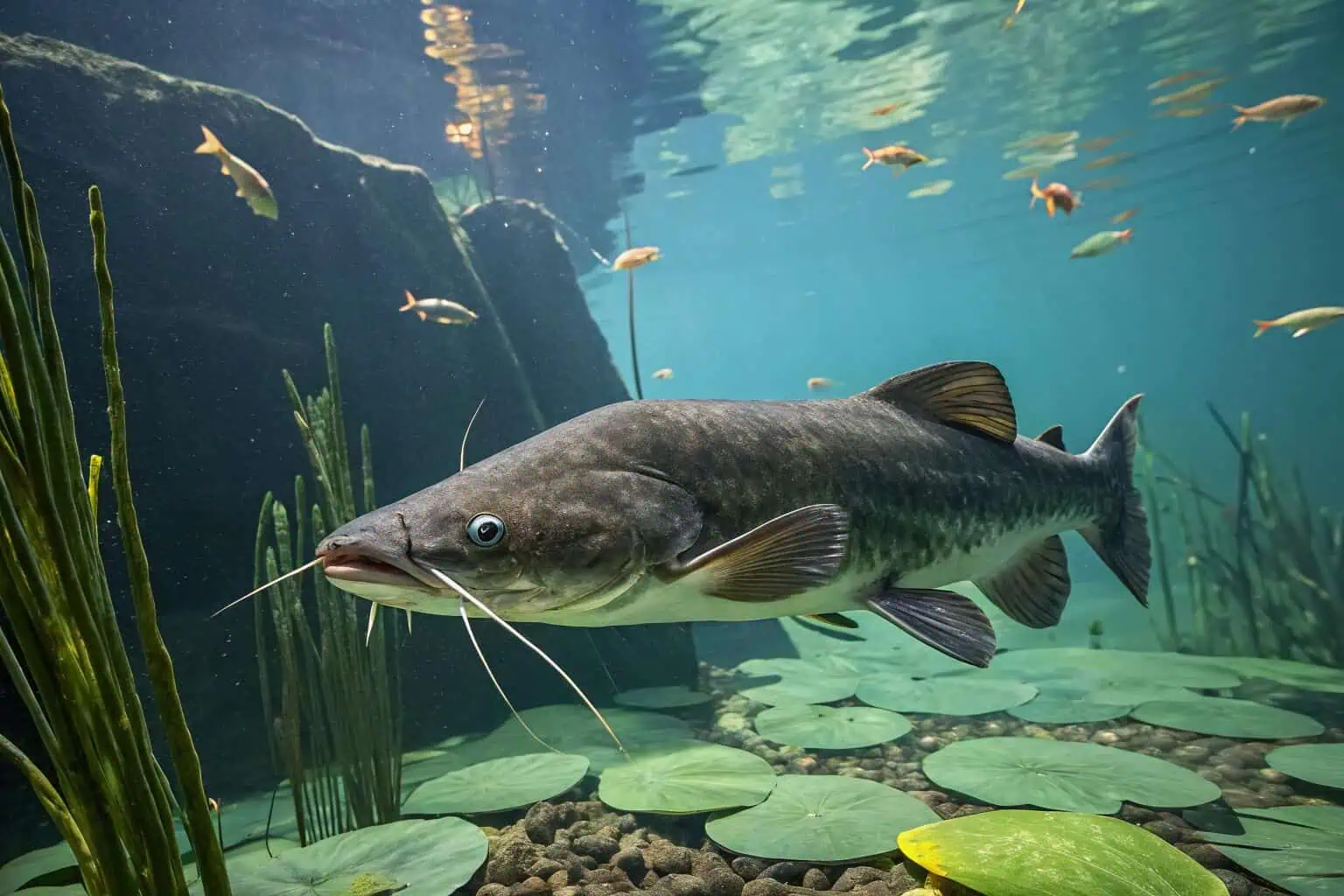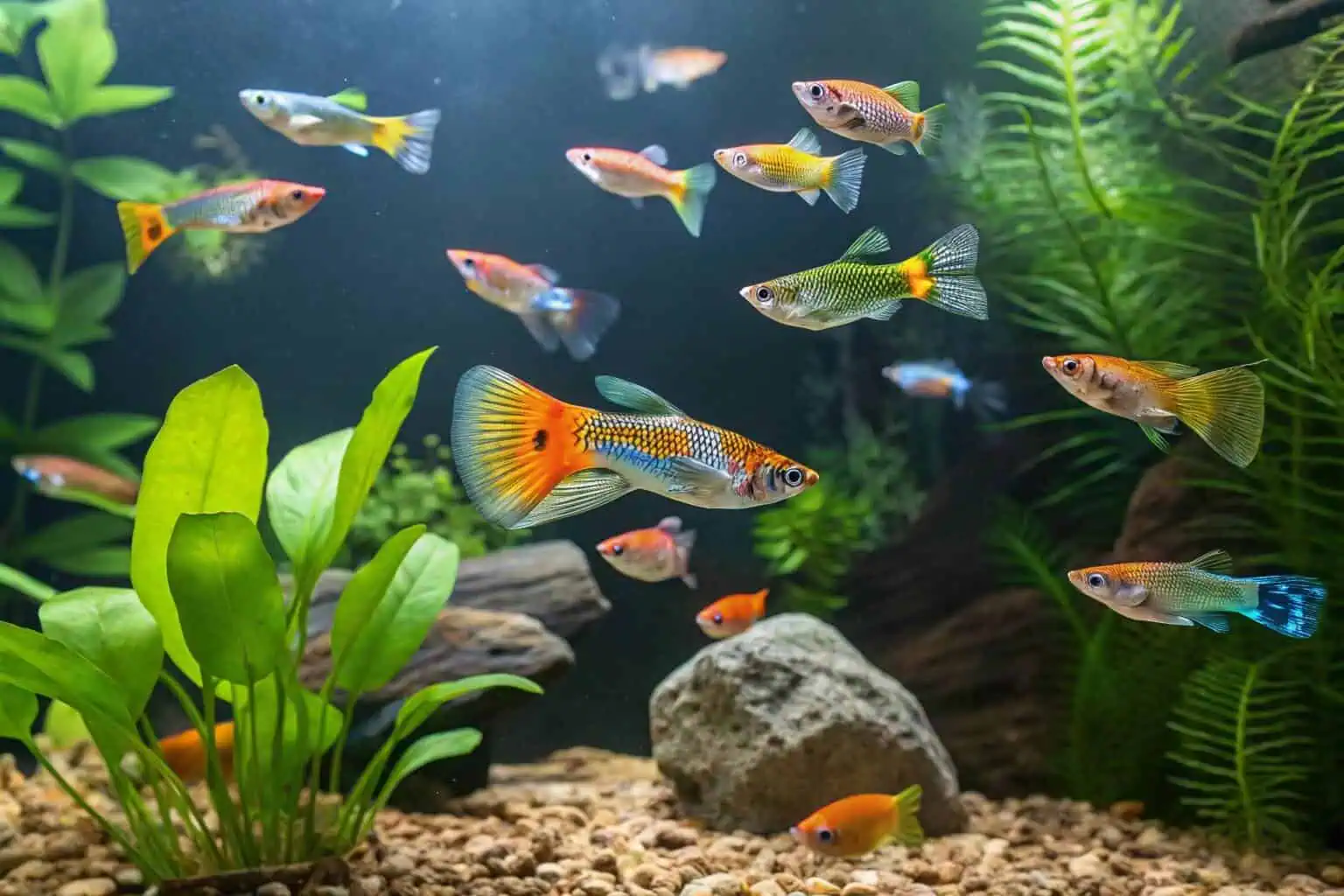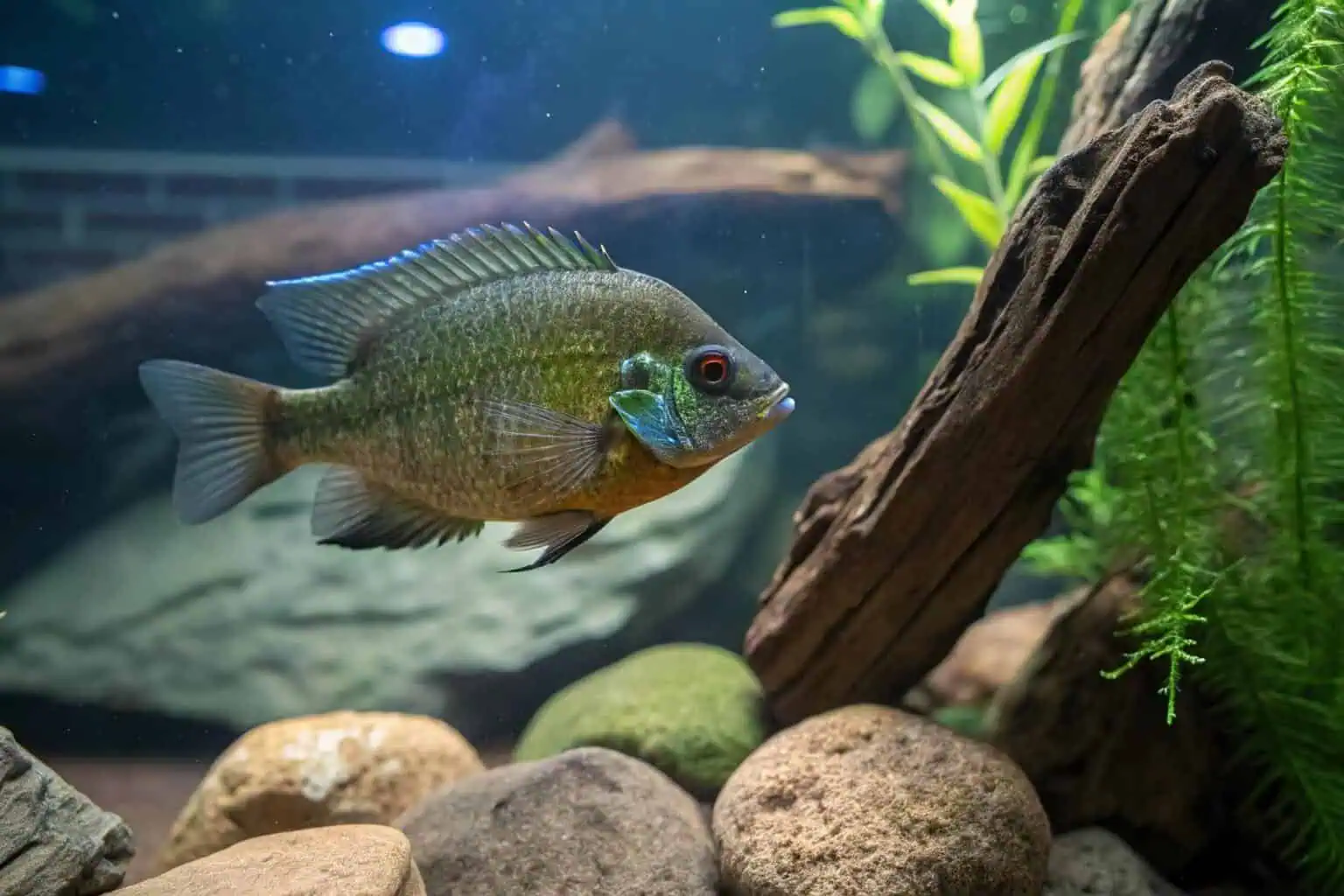Which edible fish are easiest to raise in captivity?
Want to raise your own fish but feel lost? The process can seem complex and intimidating, but it doesn't have to be. Some fish are surprisingly simple to raise.
Tilapia is often called the easiest edible fish to raise. They are incredibly hardy, grow fast, and thrive in various conditions. Their simple, plant-based diet makes them a low-cost and low-maintenance choice for anyone starting in aquaculture, from hobbyists to commercial growers.

Now that you know Tilapia is a great starting point, you might be wondering what other options are out there. Choosing the right fish depends on your goals, space, and climate. Let's explore more choices to find the perfect fish for your needs, whether for a small home aquarium or a larger-scale operation. Understanding the different species will help you start your aquaculture journey with confidence.
What is the easiest edible fish to grow?
Are you looking for a fish that grows quickly without needing constant attention? Choosing a slow-growing species can be frustrating. Find a fish that matures fast for a rewarding experience.
Tilapia stands out as the easiest edible fish to grow. Its rapid growth, adaptability to various environments, and natural resistance to disease make it an ideal choice for both new and experienced fish farmers who want a low-maintenance, high-yield option.

As someone who has worked in aquaculture for years, I've seen firsthand why Tilapia is a favorite. They are incredibly forgiving. I remember my first attempt at fish farming1 involved a small system with Tilapia. I made a few mistakes with water quality, but the fish were resilient and continued to thrive. This experience showed me just how tough they are.
Why Tilapia is a Top Choice
Tilapia's success comes down to a few key traits. They have an omnivorous diet but prefer plants, which makes their feed cheap and easy to source. They can tolerate a wide range of water conditions, including lower oxygen levels that would be stressful for other species. This resilience makes them perfect for beginners. Furthermore, they reproduce very quickly. While this can lead to overpopulation if not managed, it also means you can establish a self-sustaining stock2 with little effort. Their adaptability also makes them a fantastic choice for integrated systems like aquaponics, where they help fertilize plants.
Key Considerations for Raising Tilapia
While Tilapia are easy, they aren't invincible. The most important factor is temperature. As a tropical fish, they need warm water, typically between 77-86°F (25-30°C), to grow well. If you live in a colder climate, you'll need a heater. Tank size is another consideration. They need space to grow, so a crowded tank will slow their growth. For anyone serious about raising them, I often recommend starting with a durable, spacious container. Our collapsible fish tanks, for example, offer a great balance of size and flexibility, allowing you to create an ideal environment without a permanent installation.
Here’s a quick comparison to help you decide:
| Feature | Tilapia | Catfish |
|---|---|---|
| Growth Rate3 | Fast (6-8 months) | Very Fast (6-9 months) |
| Diet4 | Omnivorous (prefers plants) | Omnivorous (scavenger) |
| Water Tolerance5 | High | Very High |
| Temperature | Warm Water Required | Adaptable to Cooler Water |
What is the easiest meat fish to raise?
Are you looking for a fish that provides a good amount of meat? It can be disappointing to raise fish that are small or bony. Let's focus on species that give you a great return.
Catfish, especially Channel Catfish, is the easiest meat fish to raise. They are incredibly tough, grow quickly to a large size, and are efficient at converting feed into body mass. This means you get generous, mild-flavored fillets with minimal fuss.

From a business perspective, efficiency is everything. At Bancy, we work with many commercial growers, and Catfish is a top choice for a reason. They are a reliable product. Their hardiness means lower risk, and their fast growth ensures a quicker return on investment. They are a practical, no-nonsense fish for anyone focused on production. The demand for their mild, white meat is consistently high, making them a smart choice for commercial farmers who need a dependable species that performs well in various systems, including the large galvanized sheet fish tanks6 we provide.
The Advantages of Catfish Farming
Catfish are survivors. They can breathe air from the surface, which allows them to tolerate water with very low oxygen levels. This is a huge advantage, as it reduces the need for expensive aeration systems. They are also not picky eaters. As bottom-feeding scavengers7, they will eat almost anything, which simplifies feeding. Their natural toughness makes them resistant to many common diseases and parasites, reducing losses and the need for treatments. This combination of traits makes them one of the most durable and low-cost options for producing a substantial amount of fish meat.
Setting Up for Catfish
Catfish are versatile and can be raised in everything from natural ponds to large tanks. For those without a pond, a large, sturdy tank is essential. Our galvanized pipe fish tanks are a popular choice because they are strong, corrosion-resistant, and can be set up almost anywhere. While Catfish can handle murky water, maintaining good water quality is still important. Cleaner water leads to healthier fish and a better-tasting final product. Simple filtration and regular water monitoring8 will go a long way in maximizing your yield and ensuring the meat is clean and mild-flavored.
Comparing Meat Yield
When raising fish for meat, the fillet yield is a critical number. It tells you how much edible meat you get from the whole fish. Here’s how some popular species stack up:
| Fish | Fillet Yield (%) | Growth Time (to 1 lb) | Flavor Profile9 |
|---|---|---|---|
| Catfish | 40-45% | 6-9 months | Mild, Sweet |
| Tilapia | 30-35% | 6-8 months | Mild, Flaky |
| Trout | 45-50% | 9-12 months | Distinct, Nutty |
What is the easiest fish to raise?
Feeling overwhelmed by all the choices? Do you just want a simple, straightforward fish to start with? Choosing the wrong fish can turn a fun hobby into a chore. Let's simplify it.
If you're not concerned about eating them, Guppies are the easiest fish to raise. For an edible option, Tilapia is the champion. Its combination of hardiness, a simple diet, and fast breeding makes it incredibly forgiving and perfect for beginners.

I often talk to people who are just starting out. Many are drawn to aquaculture for self-sufficiency10 or as a hobby for their family. For them, success is about more than just yield; it's about the experience. I always recommend starting with a fish that builds confidence. A fish like Tilapia is perfect because it's active, grows visibly, and is very resilient. Seeing your fish thrive is what makes the hobby enjoyable and encourages you to continue and maybe even expand your setup later on.
Edible vs. Ornamental: A Key Distinction
The word "easiest" really depends on your goal. For ornamental fish keepers11, "easy" often means a fish that is small, peaceful, and breeds readily in a small tank without special care. Guppies fit this perfectly. However, for someone who wants to raise fish for food, the definition of "easy" changes. You need a fish that not only survives but also grows to a decent size efficiently. This requires more space and a focus on growth rate and feed conversion, which is why species like Tilapia and Catfish top the list for edible fish.
Top 3 Easiest Edible Fish for Beginners
For anyone starting out with edible fish, I usually point them toward three reliable choices. First is Tilapia, which is incredibly forgiving about water conditions. Second is Catfish, known for its extreme hardiness. Third is Carp, which is very tolerant of cold temperatures, making it great for outdoor ponds in cooler climates. Each has its own strengths, so the best choice depends on your specific situation.
| Fish | Key "Easy" Factor | Best For | Common Challenge |
|---|---|---|---|
| Tilapia12 | Forgiving Water Needs | Beginners, Aquaponics | Overpopulation |
| Catfish13 | Extreme Hardiness | Ponds, Large Tanks | Can Make Water Murky |
| Carp14 | Cold Tolerance | Outdoor Ponds | Can Be Bony |
What is the best edible fish for aquariums?
Do you want to raise something you can eat in your home aquarium? Many edible fish grow too large for standard tanks. But there are options that let you combine fishkeeping with food.
Bluegill Sunfish are an excellent choice for a larger home aquarium. They are hardy, interesting to watch, and stay a manageable size. They adapt well to tank life and provide a tasty meal, making them a great multi-purpose aquarium fish.

Many of our customers are individual hobbyists who don't have space for a large pond. They want to participate in aquaculture on a smaller scale. This is where raising fish in an aquarium or a small backyard tank, like our collapsible plastic fish tanks, comes in. It's a fantastic way to learn the basics of fish care and water management15. While you won't be feeding a large family from an aquarium, the satisfaction of raising your own food, even a small amount, is immense. It connects you to the process and teaches valuable lessons in sustainability.
Aquarium-Friendly Edible Fish
Besides Bluegill, other sunfish like Pumpkinseed16 or certain types of Perch can also work well in a home aquarium. The key is to provide enough space—a 55-gallon tank is a good starting point for a small group. Even Tilapia can be grown in an aquarium, but you'll need to harvest them when they are still small, around plate size, before they outgrow the tank. The goal is to choose a fish that won't become stressed by the limited space, as stress can lead to disease and poor growth.
Creating the Right Aquarium Environment
To successfully raise edible fish in an aquarium, you need to create a stable environment. Good filtration17 is non-negotiable, as it removes waste and keeps the water clean. Regular partial water changes are also crucial. It's also a good idea to provide some structure, like rocks, driftwood, or PVC pipes. This gives the fish places to hide and feel secure, which reduces stress. Even for hardy fish like Bluegill, a clean and stable environment18 will help them thrive and ensure they are healthy enough for consumption.
From Tank to Table: Is It Worth It?
Let's be practical. Raising fish for food in a standard home aquarium is more of a rewarding hobby than a primary food source. The yield will be modest. However, the experience is incredibly valuable. It teaches you about biology, chemistry, and responsibility. It's a great educational project for kids19 and a fulfilling way to practice self-sufficiency on a small scale20. The taste of a fish you raised yourself is unlike anything else. It represents a direct connection to your food, which is a powerful and satisfying feeling.
Conclusion
Choosing the right fish is the first step to a successful aquaculture journey. Whether you start with hardy Tilapia, meaty Catfish, or aquarium-friendly Bluegill, the experience is rewarding.
-
Learn about the best practices in fish farming to ensure a successful and sustainable aquaculture operation, enhancing your knowledge and skills. ↩
-
This link will guide you through the process of creating a self-sustaining tilapia stock, ensuring a successful aquaculture venture. ↩
-
Understanding the growth rates of these fish can help in aquaculture planning and management. ↩
-
Exploring their diets can provide insights into their care and feeding in aquaculture settings. ↩
-
Knowing their water tolerance levels is crucial for maintaining healthy aquatic environments. ↩
-
Discover how large galvanized sheet fish tanks can enhance aquaculture efficiency and productivity. ↩
-
Exploring the role of bottom-feeding scavengers can provide insights into their ecological importance and feeding habits. ↩
-
Learn about the best practices for filtration and monitoring to ensure a healthy environment for your fish. ↩
-
Flavor profiles influence consumer preferences and market demand. Explore this resource to understand how flavor affects fish sales. ↩
-
Understanding the role of aquaculture in self-sufficiency can inspire you to start your own sustainable fish farming journey. ↩
-
Explore this link to discover the top fish choices for ornamental fish keepers, ensuring a vibrant and peaceful aquarium. ↩
-
Explore the advantages of Tilapia in aquaponics, including its forgiving nature and suitability for beginners. ↩
-
Learn about the hardiness of Catfish and how it can thrive in various pond conditions, making it a great choice for fish enthusiasts. ↩
-
Discover why Carp's cold tolerance makes it ideal for outdoor ponds, especially in cooler regions, and its unique characteristics. ↩
-
This resource will provide essential tips and techniques to elevate your fish care and water management skills, crucial for successful aquaculture. ↩
-
Explore this link to learn about the specific needs and care tips for keeping Pumpkinseed fish healthy in your aquarium. ↩
-
Understanding the role of filtration can help you maintain a healthy environment for your fish, ensuring their growth and safety. ↩
-
A clean environment is crucial for fish health; learning more can help you create the best habitat for your fish. ↩
-
Discover how raising fish can serve as a fun and educational project for kids, teaching them valuable lessons about biology and responsibility. ↩
-
Learn about various methods of practicing self-sufficiency on a small scale, including raising fish, to enhance your lifestyle and sustainability efforts. ↩